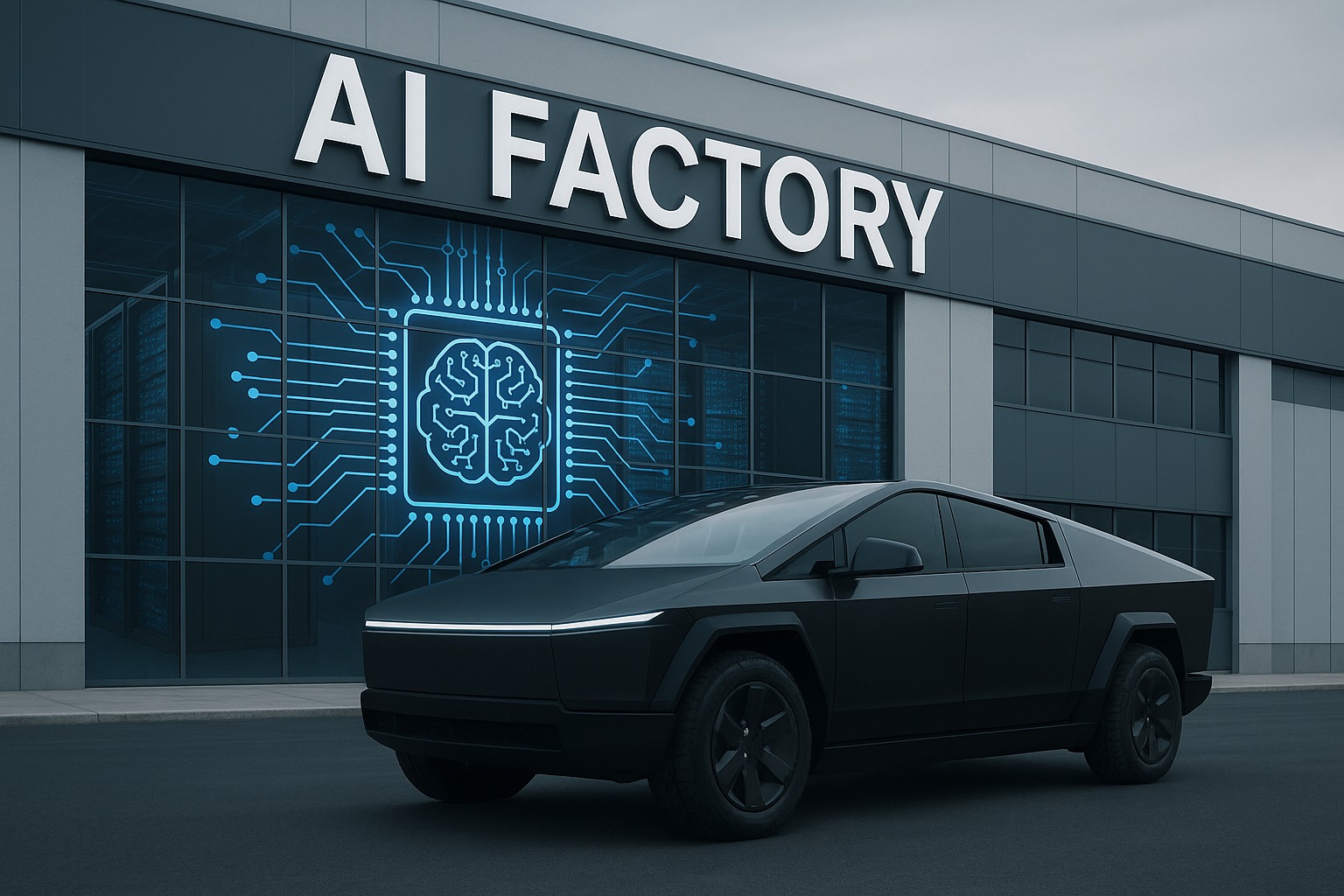Executive Perspective
Artificial intelligence is no longer defined by what it can do, but where it lives.
Two architects of this era—Jensen Huang and Elon Musk—see intelligence as the next industrial resource. Their perspectives may be complimentary, but they are building in opposite directions.
Huang is constructing AI factories: centralized infrastructure that manufactures cognition at planetary scale.
Musk is building AI fleets: mobile, distributed systems where every car is a node in a living neural network.
Together, their visions outline the coming architecture of intelligence. One is rooted in control, the other in motion.
The Factory Model
Huang’s model is built on sovereign compute.
His premise: intelligence will be produced where compute, energy, and data converge—massive data centers that function like digital power plants.
These AI factories train models for science, medicine, defense, and enterprise. Each one converts electricity and silicon into something intangible yet immensely valuable: insight.
They are the logical extension of the industrial age: a concentration of power, capital, and control.
The Fleet Model
Musk’s approach is the mirror image.
Instead of building larger factories, he deploys millions of connected vehicles that collectively process and refine sensory data in real time.
Every Tesla, in essence, is a data center on wheels—a node that learns from the physical world and feeds intelligence back to the core.
The fleet operates as a decentralized neural network: messy, adaptive, and continuously improving.
While Huang scales compute, Musk scales experience.
Data: Order vs. Chaos
The difference between their worlds begins with data.
Huang’s model depends on structured, labeled, high-quality data sets.
Musk’s depends on raw, unfiltered sensory chaos gathered from billions of real-world interactions.
This contrast represents a deeper philosophical split:
-
Huang’s AI learns from simulation.
-
Musk’s AI learns from reality.
The eventual winner may depend on which proves more efficient: synthetic knowledge or lived experience.
4. Economics of Intelligence
These two systems define distinct economic logics.
-
Huang’s model: capital-intensive, sovereign, and centralize, i.e. AI as an industrial product.
-
Musk’s model: asset-driven, decentralized, and adaptive, i.e. AI as an emergent byproduct of mobility.
Huang sells the infrastructure of thought. Musk sells the vehicles that generate it. Both are creating ecosystems where compute is no longer a cost center—it’s the new currency of value.
5. Power and Governance
The governance implications are stark.
Centralized compute can be regulated, secured, and—if necessary—controlled by governments.
Distributed compute cannot. A decentralized intelligence fleet defies borders, oversight, and containment.
That makes Huang’s model geopolitically safer—and Musk’s strategically unpredictable.
Both paths will likely coexist: one ensuring order, the other enabling innovation.
6. Convergence Ahead
Over time, factories and fleets will merge.
Edge devices (cars, drones, robotics) will sync with national compute grids, creating a hybrid layer of intelligence that spans from sovereign data centers to personal machines.
In that future, power won’t come from owning the model, but from managing the mesh, the infrastructure that links intelligence everywhere it lives.
Closing Insight
The first industrial revolution was powered by machines that moved.
The next will be powered by machines that think, some anchored in data centers, others driving down the street.
The future of AI is will have many left turns before it reaches its full potential (pun intended).








